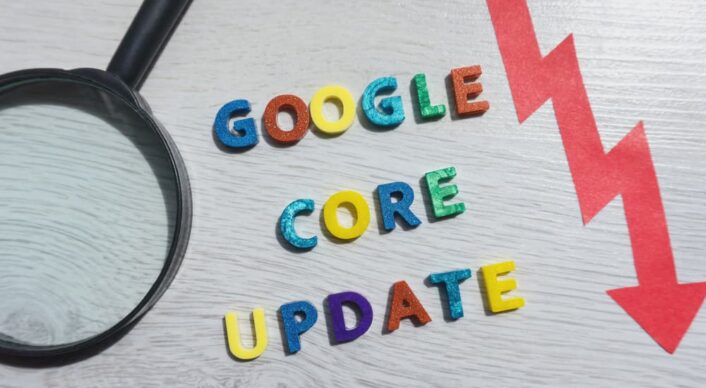
We’ve probably all experienced it—the feeling that something’s not quite right with the website. If you’ve ever asked yourself, “Where did the traffic go?” or “Where is all this traffic coming from?” then keep reading. It might be that Google has rolled out what’s known as a Core Update. When this happens, we often receive many questions from concerned and surprised website owners. That’s why we’ve put together this article to answer the most frequently asked questions we get in connection with a Google Core Update.
What is a Core Update?
A Google Core Update refers to significant changes made to Google’s algorithm that impact the search results on a broad scale. These updates can be rolled out globally or targeted to specific countries or languages.
How do I know when a Core Update is happening?
The fastest way to get information about current or upcoming Core Updates is by following Google’s official Twitter account “GoogleSearchLiaison“. If you’re not on Twitter, the Google Developers Blog is also a reliable source of information.
Why do Core Updates happen?
Google’s search engine and its algorithm are constantly evolving. Small changes are continuously tested and refined to ensure users have the best and most positive experience when using the search engine. However, when Google decides to make broader, more impactful changes to its algorithm, these are called “Core Updates.” These updates are designed to refine the search results in general — whether by improving how Google understands text and images or by closing loopholes that website owners might exploit for undeserved visibility in search results.
How common are Core Updates?
Google typically rolls out core updates every few months — approximately 3 to 5 times per year.
What does Google evaluate during a Core Update?
The goal of Core Updates is to improve the quality of the search results shown to users. No two updates are exactly the same, and many have historically had a specific focus. For example, an update might aim to reward websites with high-quality content or to demote sites that are considered spammy or untrustworthy.
How should I act during a Core Update?
Stay calm. While a Core Update is being rolled out, there’s little you can do to immediately improve rankings or mitigate any losses. Rankings can be volatile during this period, fluctuating up and down. It’s best to wait until the update is fully rolled out — and even then, it may take 1–2 more weeks for things to stabilize.
How long does a Core Update take?
There’s no exact timeline, but as a rule of thumb, a Google Core Update generally takes 2 to 4 weeks to fully roll out.
My rankings have dropped — has Google penalized my site?
A Core Update is not a punishment. Google’s goal is to deliver more relevant results and better answers to user queries. If you’ve followed Google’s guidelines well, you reduce the risk of being negatively affected. However, since Google often experiments, it’s possible to see shifts in keyword rankings.
I’ve lost traffic — is it because of a Core Update?
If a Core Update has just been released, it’s possible that your site’s traffic has been affected. A drop in keyword rankings means fewer users may be clicking through to your site, resulting in less traffic. Still, it’s crucial to investigate a traffic drop from multiple angles before concluding that the update is the cause.
How do I know if I’ve been affected by a Core Update?
If you haven’t made any major changes to your site recently, but you notice a clear change in your organic traffic (positive or negative) that coincides with the timing of a Core Update, it’s likely (though not certain) that your site has been affected.
Are the changes permanent?
No, the changes aren’t permanent. Google constantly tests and tweaks its search results, so it’s common for rankings to be volatile during and after an update.
How do I recover from a Core Update?
Recovering from a Core Update can involve various strategies — it depends, for example, on how severely your site has been affected. Often, significant recovery or noticeable improvement doesn’t happen until the next Core Update is rolled out. That means the time between updates is your best opportunity to work on your site and improve it.
Historically, the following areas have been important to review and enhance in order to improve your site in Google’s eyes:
- How keywords are used and optimized on your pages
- Mobile-friendliness
- High-quality, user-focused content
- User-friendly design and functionality
- Website speed and overall stability
My site performed really well in the last update, but now things have taken a turn for the worse – what happened?
Google continuously experiments, and it’s possible that a previous Core Update temporarily boosted your site’s rankings more than it deserved. With a new update, other websites may have improved their content or Google may have realized that those previously outranked sites were actually better suited for those top positions.
When should you seek help?
If you’ve lost traffic and/or revenue and don’t know why — reach out for assistance in identifying the cause. If you do know what’s happened but aren’t sure how to fix it effectively, our SEO specialists can advise you so that you’re investing your time in the right areas.
How should I respond after a Core Update?
After a Google Core Update, it’s usually wise to stay calm and avoid making impulsive decisions. Whether your site has gained or lost organic traffic, there’s a good chance things could shift again with the next update. Google often paints with broad strokes in the beginning and then gradually fine-tunes the results over time.
In the meantime, you should continue focusing on what has always mattered: building a user-friendly website with unique, well-structured, and relevant content.
